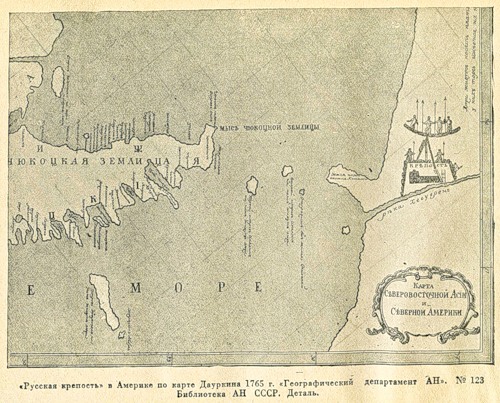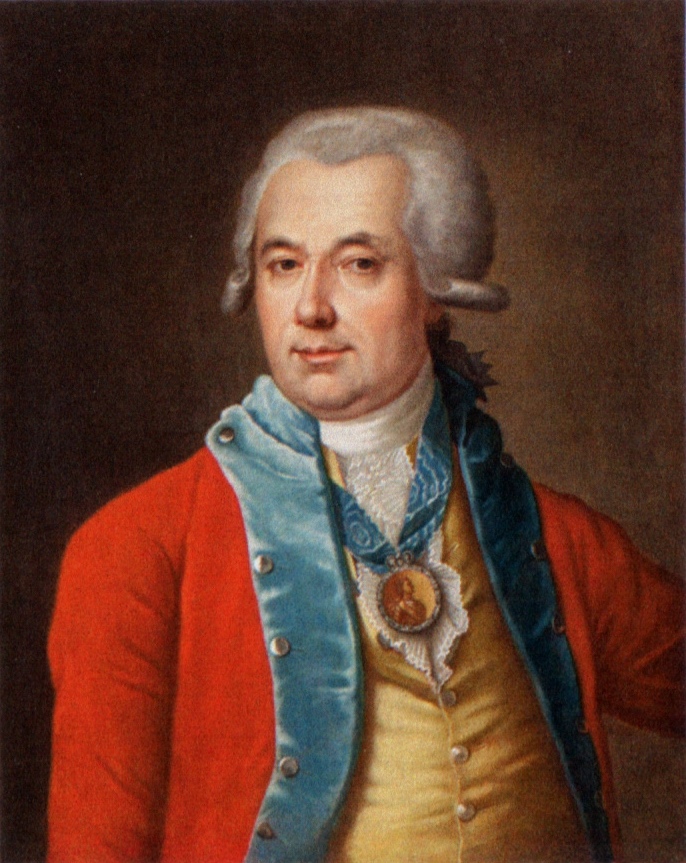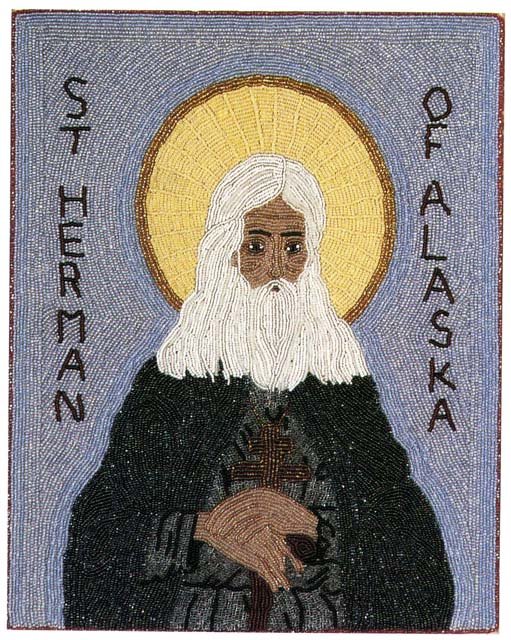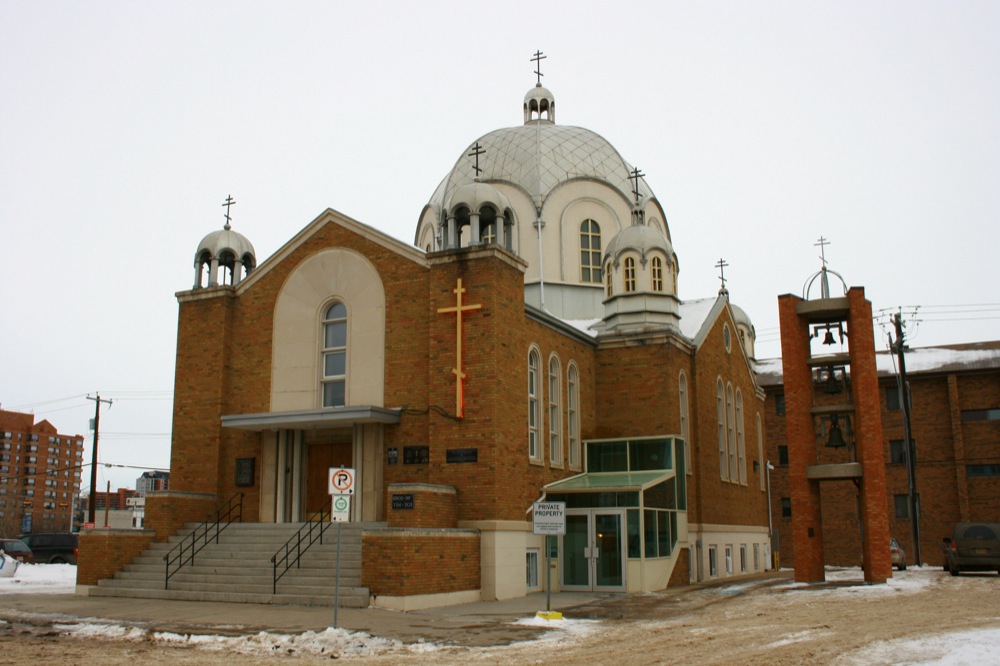
Three Centuries of Orthodoxy in America
/ Главная / Russkiy Mir Foundation / Publications / Three Centuries of Orthodoxy in AmericaThree Centuries of Orthodoxy in America
Even members of Joseph Billings’ Russian expedition who arrived in Alaska in 1790 – 1791 reported about many baptized local residents and their knowledge of Orthodox traditions. It was rather surprising since back then no Orthodox priests had visited the shores of Alaska yet. So who were the first Orthodox baptizers in North America?
It all started in Alaska
Alaska was first reached by Russian sailors in 1732 (Fedorov - Gvozdev - Moshkov expedition) and then in 1741 - 1742 (Bering's Second Kamchatka Expedition). But there were reports that the Russians had known about its existence almost 100 years earlier.
The very first known permanent Russian settlement - the Three Saints Harbor on Kodiak Island off the coast of Alaska - was founded by Grigory Shelikhov, a merchant, in 1784.

Daurkin's map (Kyngovey is shown on the right). Photo credit: ru.wikipedia.org
First baptizers in Alaska
Members of the Russian government’s geographic and astronomical naval expedition under the command of Joseph Billings, while in Alaska in 1790-1791, reported about a significant number of baptized local residents and their acquaintance with Orthodox traditions. It was rather surprising since back then no Orthodox priests had visited the shores of Alaska yet.
The fact is that the first Orthodox believers in North America were not missionaries and clergymen, but Russian merchants and fur hunters. They became the first baptizers of local residents who they traded with and sometimes lived next to for several years.
The hunters began to advance for valuable fur from Siberia to the Aleutian Islands shortly after the discovery of America by the Second Kamchatka Expedition led by Vitus Bering, the commander of the Russian fleet, in 1741.
The news of the abundance of marine fur animals on the islands of the northern part of the Pacific Ocean, the so-called East Sea, was brought to Kamchatka by Bering's team in 1742, which marked the beginning of the commercial pioneering of those lands.
Starting from the 1780s, several commercial and industrial companies sought monopoly rights for Alaska development from the government. One of them, the Russian-American Company, was run by Grigory Shelikhov, a Russian merchant from a wealthy merchant family in the city of Kursk. In accordance with the decree of Paul I, Shelikhov became the manager of the new Russian lands in Alaska.
Missionaries from Valaam
During his two years in Alaska, Grigory Shelikhov taught Christian law to local residents and personally baptized 40 people. Together with Ivan Golikov, his companion, he also had the idea of establishing a church in Alaska, that is, building an Orthodox temple and appointing a priest there.
In April 1793 Shelikhov and Golikov sent a formal request to the Chief Procurator of the Synod for the establishment of an Orthodox Church in Alaska. Further, the case was referred to Catherine the Great for consideration. The empress reacted surprisingly fast. On May 13, 1793, her decree was issued with essential permission to establish a church in Alaska. It was indicated that Metropolitan Gabriel would implement the decision. In pursuance of the decree, Metropolitan approached Elder Nazariy, the abbot of the Valaam monastery, with a request to appoint four hieromonks, two deacons, and two lay brothers from the monastery brethren for these purposes.
Very quickly, at the end of 1793, a group of eight monks of the Valaam and Konevets monasteries set off from Petersburg along the Siberian highroads to the Far Northeast of Russia, and 9 months later arrived on Kodiak Island, the largest island in the Aleutian ridge that is separated from the southern coast of Alaska by the Shelikhov Strait. That was the beginning of the Orthodox mission in Kodiak or Alaska, as well as the Orthodoxy in America in general, which turned exactly 227 years old in May 2021.

Grigory Shelikhov, portrait by an unknown artist. Photo credit: ru.wikipedia.org
In 1795, Hieromonk Juvenal, one of the Valaam missionaries, went from Kodiak Island to the Kenai Peninsula, the southern tip of Alaska, and baptized more than 700 local residents there. In 1796, Juvenal, continuing his mission in mainland Alaska, was killed by unfriendly natives and became the first Orthodox martyr in American land.
Personalities
Grigory Shelikhov and Hieromonk Juvenal mentioned above played an important role in the spread of Orthodoxy in Alaska and the Aleutian Islands. But the true flourishing of Orthodoxy in those distant lands was in the period of Saint Innocent (Veniaminov), who served there for 37 years in total, first as a parish priest and then as a bishop. Judging by what is known about his life, Saint Innocent was an outstanding person in many respects. He learned the Aleut language so well that he was able to preach without an interpreter and what is even more surprising - he wrote the grammar and created the alphabet, and therefore the written Aleut language.
He built temples, founded schools there, and taught people himself. He also founded a theological college and a seminary. Music and painting were included in the school curriculum, and the seminary students studied icon painting and church music. It is known for a fact that there were two local icon painters in the nineteenth century - Vasily Kruikov and Georgy Petukhov.
Herman of Alaska, another member of a group of Valaam monks, became the most famous saint in America. Having arrived on Kodiak Island, he settled on the nearby Spruce Island and called it New Valaam. He never returned to Russia and preached on Alaska islands and mainland. The name of the saint is associated with the activities of Seraphim Rose, a famous American hieromonk and spiritual writer who founded the St. Herman of Alaska Monastery in California, which became an Orthodox missionary center on the west coast of the United States.

St. Herman of Alaska. Icon of St. Herman made in 1992 by Eleanor Naumoff, a bead-weaving craftswoman from the Koniag (Alutiiq) people, Old Harbor Village, Alaska.
After Alaska was sold and formally transferred to the United States in 1867, most ethnic Russians, including the vast majority of Orthodox priests, returned to Russia leaving 12,000 native Christians, 9 Orthodox parishes, 35 chapels, 17 schools, and 3 orphanages to the merсу of fate. Over the next 100 years, the Alaska Mission received only occasional help from the Orthodox community in other American states and continued to expand mostly due to the efforts of indigenous leaders.
The further spread of Orthodoxy deep into the North American continent, to the United States and Canada, was associated with a gradually increasing flow of Orthodox immigrants. The first waves of immigration were dominated by the natives of the Carpathian Ruthenia - Galicia, Bukovina, Volhynia, Kholmshchyna, Transcarpathia, and Slovakia, as well as Orthodox Greeks, Serbs, i.e., groups of the East Slavic population that got a common name - Rusyns. Later, immigrants from Russia came.
Read more: Deal of the Century or Seward’s Folly? How Alaska was Sold
Orthodox parishes in Canada
Officially, the beginning of the Rusyn resettlement to Canada is considered to be 1891 marked by a large wave of immigrants from Galicia and Bukovina that settled in the western provinces of Canada.
The first Orthodox parish in Canada was founded by Elder Priest James (Jacob) Korchinsky in Edmonton in 1902. And the first bishop who consecrated the first Orthodox church in Canada in 1901 was Bishop of the Aleutian Islands and North America Tikhon (Belavin), the future Patriarch of Moscow and All Russia. By 1907, there had been 7,000 Orthodox believers in Canada.

St. Barbara’s Russian Orthodox Cathedral in Edmonton. Photo credit: Russian Orthodox Church in Canada
On December 27, 2000, a metochion of the Russian Orthodox Church was established in the city of Toronto by the decision of the Holy Synod of the Russian Orthodox Church "in accordance with the agreement between the Russian Orthodox Church and the Orthodox Church in America".
Currently, there are 25 parishes and communities in Canada, among them the St. Barbara’s Russian Orthodox Cathedral in Edmonton, the cathedral city of Orthodox Canada, the Intercession Parish of the City of Ottawa, the capital of Canada, the Parish of St. Tikhon in Toronto, and 22 communities united in two more parishes. There are more than 80 Orthodox churches and 6 Orthodox monasteries in Canada.
Bishop Job of Kashira is currently the Administrator of the Patriarchal Parishes in Canada.
New publications

 Mikhail Kalatozov, a director who transformed the world of cinematography in many ways, was born 120 years ago. He was a Soviet film official and a propagandist. Above all, he was capable of producing movies that struck viewers with their power and poetic language.
Mikhail Kalatozov, a director who transformed the world of cinematography in many ways, was born 120 years ago. He was a Soviet film official and a propagandist. Above all, he was capable of producing movies that struck viewers with their power and poetic language.  Ukrainian authorities have launched a persecution campaign against the canonical Ukrainian Orthodox Church (UOC), the biggest one in the country's modern history. Over the past year, state sanctions were imposed on clergy representatives, searches were conducted in churches, clergymen were arrested, criminal cases were initiated, the activity of the UOC was banned in various regions of the country, and monasteries and churches were seized.
Ukrainian authorities have launched a persecution campaign against the canonical Ukrainian Orthodox Church (UOC), the biggest one in the country's modern history. Over the past year, state sanctions were imposed on clergy representatives, searches were conducted in churches, clergymen were arrested, criminal cases were initiated, the activity of the UOC was banned in various regions of the country, and monasteries and churches were seized.  When Nektary Kotlyaroff, a fourth-generation Russian Australian and founder of the Russian Orthodox Choir in Sydney, first visited Russia, the first person he spoke to was a cab driver at the airport. Having heard that Nektariy's ancestors left Russia more than 100 years ago, the driver was astonished, "How come you haven't forgotten the Russian language?" Nektary Kotlyaroff repeated his answer in an interview with the Russkiy Mir. His affinity to the Orthodox Church (many of his ancestors and relatives were priests) and the traditions of a large Russian family brought from Russia helped him to preserve the Russian language.
When Nektary Kotlyaroff, a fourth-generation Russian Australian and founder of the Russian Orthodox Choir in Sydney, first visited Russia, the first person he spoke to was a cab driver at the airport. Having heard that Nektariy's ancestors left Russia more than 100 years ago, the driver was astonished, "How come you haven't forgotten the Russian language?" Nektary Kotlyaroff repeated his answer in an interview with the Russkiy Mir. His affinity to the Orthodox Church (many of his ancestors and relatives were priests) and the traditions of a large Russian family brought from Russia helped him to preserve the Russian language.

 The leaders of the Friends of the Great Russia cultural association (Amici Della Grande Russia) in Italy believe that the Western policy of abolishing Russian culture in Europe has finally failed. Furthermore, it was doomed to failure from the beginning.
The leaders of the Friends of the Great Russia cultural association (Amici Della Grande Russia) in Italy believe that the Western policy of abolishing Russian culture in Europe has finally failed. Furthermore, it was doomed to failure from the beginning.  Name of Vladimir Nemirovich-Danchenko is inscribed in the history of Russian theater along with Konstantin Stanislavski, the other founding father of the Moscow Art Theater. Nevertheless, Mr. Nemirovich-Danchenko was a renowned writer, playwright, and theater teacher even before their famous meeting in the Slavic Bazaar restaurant. Furthermore, it was Mr. Nemirovich-Danchenko who came up with the idea of establishing a new "people's" theater believing that the theater could become a "department of public education."
Name of Vladimir Nemirovich-Danchenko is inscribed in the history of Russian theater along with Konstantin Stanislavski, the other founding father of the Moscow Art Theater. Nevertheless, Mr. Nemirovich-Danchenko was a renowned writer, playwright, and theater teacher even before their famous meeting in the Slavic Bazaar restaurant. Furthermore, it was Mr. Nemirovich-Danchenko who came up with the idea of establishing a new "people's" theater believing that the theater could become a "department of public education."  "Russia is a thing of which the intellect cannot conceive..." by Fyodor Tyutchev are famous among Russians at least. December marks the 220th anniversary of the poet's birth. Yet, he never considered poetry to be his life's mission and was preoccupied with matters of a global scale. Mr.Tyutchev fought his war focusing on relations between Russia and the West, the origins of mutual misunderstanding, and the origins of Russophobia. When you read his works today, it feels as though he saw things coming in a crystal ball...
"Russia is a thing of which the intellect cannot conceive..." by Fyodor Tyutchev are famous among Russians at least. December marks the 220th anniversary of the poet's birth. Yet, he never considered poetry to be his life's mission and was preoccupied with matters of a global scale. Mr.Tyutchev fought his war focusing on relations between Russia and the West, the origins of mutual misunderstanding, and the origins of Russophobia. When you read his works today, it feels as though he saw things coming in a crystal ball...